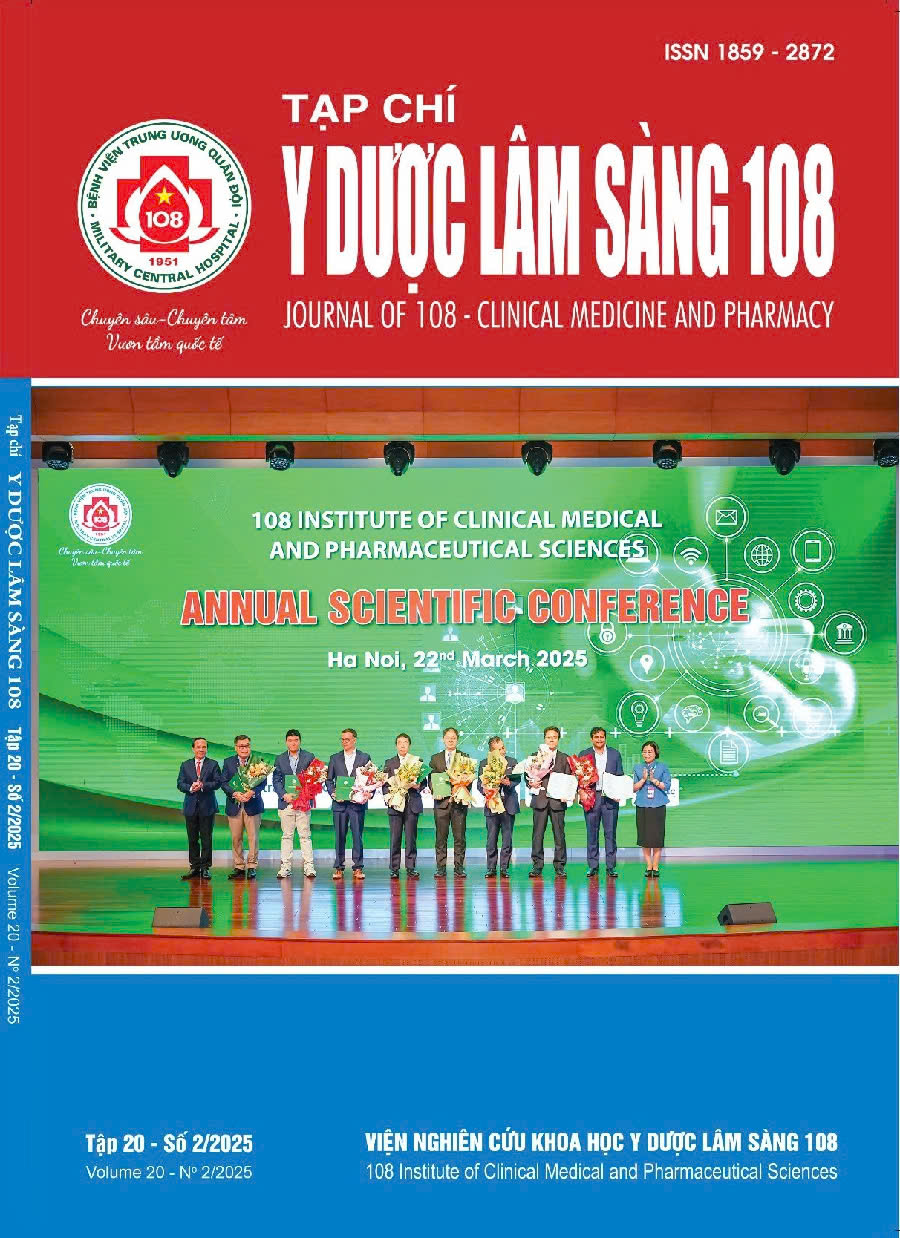The value of chromoendoscopy and narrow-band imaging in the diagnosis of early gastric cancer and precancerous lesions
Main Article Content
Keywords
Abstract
Objective: To evaluate the value of chromoendoscopy and narrow band imaging (NBI) in diagnosis of gastric cancer and precancerous lesions. Subject and method: A total of 200 patients with localized gastric lesions identified through conventional endoscopy at 108 Military Central Hospital between January 2018 and January 2023 were included in the study. Procedures were performed according to standard protocols. Histopathological results were compared with endoscopic diagnoses. Result: The lesion location at the lesser curvature and the antrum accounted for 70%, the pylorus was 19%. Lesion size < 2cm accounted for over 80%, of which size < 1cm was the majority (51%). Lesions with unclear boundaries had a rate of 51%, blurry boundaries were 26%, and clear boundaries were 23%. In 46 patients with clear lesion boundaries, homogeneous surface microstructure damage accounted for 10.8%, heterogeneous 21.7%, and loss of surface structure was 67.5%. Combining chromo endoscopy and narrow-band imaging endoscopy helps detect early cancer and pre-cancer at a rate of 94.2%, of which early cancer was 42.9%, high-grade dysplasia was 34.2%, low-grade dysplasia, accounting for 17.1%. Conclusion: Chromo endoscopy and narrow-band imaging endoscopy techniques are valuable in diagnosing early gastric cancer and precancerous lesions. These techniques can be widely applied in clinical practice.
Article Details
References
2. Japanese Gastric Cancer Association (2011) Japanese classification of gastric carcinoma: 3rd English edition. Gastric cancer 14(2): 101-112.
3. Xia JY, Aadam AA (2022) Advances in screening and detection of gastric cancer. Journal of surgical oncology 125(7): 1104-1109.
4. Hu YY, Lian QW, Lin ZH, Zhong J, Xue M, Wang LJ (2015) Diagnostic performance of magnifying narrow-band imaging for early gastric cancer: A meta-analysis. World Journal of Gastroenterology: WJG 21(25): 7884.
5. Lê Chí Thông, Đặng Thanh, Trần Phương Nam (2018) Nghiên cứu giá trị của nội soi mềm dải ánh sáng hẹp trong chấn đoán và theo dõi sau điều trị ung thư hạ họng và ung thư thanh quản. Tạp chí Y Dược Huế 8(6): 114-122.
6. Phạm Bình Nguyên, Vũ Trường Khanh, Đào Văn Long (2021) Nghiên cứu giá trị của nội soi phóng đại nhuộm màu ảo (FICE) và nhuộm màu thật (Crystal Violet) trong dự đoán kết quả mô bệnh học đại trực tràng. Tạp chí Y học Việt Nam 506(1).
7. Yao K (2013) The endoscopic diagnosis of early gastric cancer. Ann Gastroenterol 26(1): 11-22.
8. Yao K, Uedo N, Kamada T et al (2020) Guidelines for endoscopic diagnosis of early gastric cancer. Dig Endosc 32(5): 663-698. doi:10.1111/den.13684.
9. Nguyễn Thị Thu Huyền, Lương Thị Kiều Diễm (2022) Kết quả chẩn đoán tổn thương ung thư dạ dày sớm qua nội soi có đối chiều mô bệnh học tại Thái Nguyên. Tạp chí Y học Việt Nam 513(2): 251-254.
10. Kitagawa Y, Ishigaki A, Nishii R, Sugita O, Hara T, Suzuki T (2022) Clinical outcome of the delineation-without-negative-biopsy strategy in magnifying image-enhanced endoscopy for identifying the extent of differentiated-type early gastric cancer. Surgical Endoscopy 36(9): 6576-6585.
11. Le H, Wang L, Zhang L et al (2021) Magnifying endoscopy in detecting early gastric cancer: A network meta-analysis of prospective studies. Medicine 100(3): 23934.
12. Ma M, Li Z, Yu T et al (2022) Application of deep learning in the real-time diagnosis of gastric lesion based on magnifying optical enhancement videos. Frontiers in Oncology 12: 945904.
 ISSN: 1859 - 2872
ISSN: 1859 - 2872
